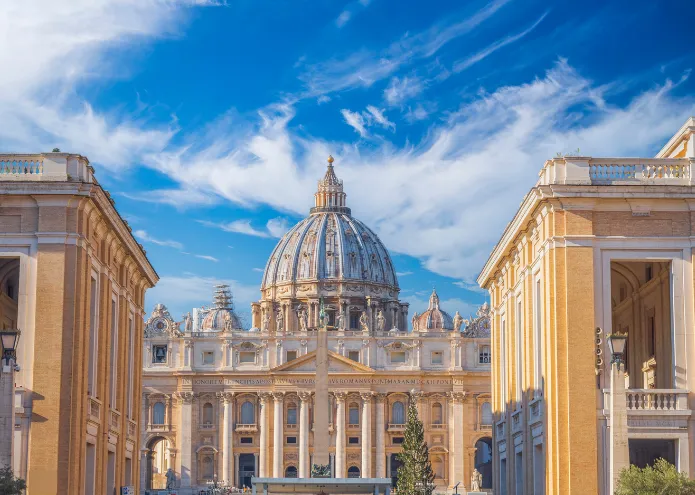Sistine Chapel History & Creation - Michelangelo’s Masterpiece of Faith
Uncover the origins of the Sistine Chapel — from its papal foundations to Michelangelo’s divine frescoes that redefined Western art and spirituality.

The Sistine Chapel is not just a monument — it is a revelation in plaster and pigment, a place where the divine meets the human in lines, light, and color. It stands within the Apostolic Palace in Vatican City, serving both as a liturgical sanctuary and the soul of the papal tradition.
🏛️ The Vision of Pope Sixtus IV
Commissioned by Pope Sixtus IV della Rovere (1471–1484), the chapel was built between 1473 and 1481 and named in his honor (“Sistina” derives from “Sixtus”). Architect Baccio Pontelli designed it following the biblical proportions of Solomon’s Temple, embedding theology into geometry.
Its initial purpose was not spectacle but sanctity:
“To serve as the private chapel of the Pope and the setting for the most sacred ceremonies of the Church — including the conclave that elects his successor.”
🎨 The First Frescoes
Before Michelangelo, a team of early Renaissance masters — Perugino, Botticelli, Ghirlandaio, Rosselli, and Pinturicchio — covered the walls with frescoes.
They depicted parallel narratives of Moses and Christ, symbolizing the continuity between the Old Covenant and the New.
These artists introduced a pictorial dialogue of salvation, where every panel mirrored divine order through perspective and proportion.
🕯️ Enter Michelangelo
In 1508, Pope Julius II called upon Michelangelo Buonarroti — a sculptor by passion, reluctant to paint — to transform the ceiling. What began as a commission became a cosmic epic in color and form.
Working alone for four years, lying on scaffolds he designed himself, Michelangelo painted over 12,000 square feet of plaster. His ceiling became a theology in motion — creation, temptation, flood, and rebirth.
“I saw the angel in the marble and carved until I set him free.”
— Michelangelo
🌌 The Vault of Genesis
At its heart lie nine scenes from the Book of Genesis, including:
- The Separation of Light from Darkness
- The Creation of the Sun, Moon, and Earth
- The Creation of Adam
- The Creation of Eve
- The Temptation and Expulsion
- The Great Flood
Around them swirl prophets, sibyls, and ignudi — a cosmic chorus of body and spirit.
🔥 A New Dawn of Art
When unveiled in 1512, the ceiling stunned Rome. Never before had art captured divinity through anatomy, movement through geometry, the infinite through the human.
Decades later, Michelangelo returned to paint The Last Judgment on the altar wall — a monumental reflection of mortality and redemption.
The Sistine Chapel endures as the beating heart of Western art — where brushstrokes became scripture, and the ceiling became sky.
Legacy of Faith and Genius
Today, the Sistine Chapel remains the beating heart of the Vatican, where art and faith meet in eternal dialogue.
To stand beneath its vaults is to stand at the threshold between heaven and earth, witnessing humanity’s yearning for the divine made visible in color and form.
About the Author

Art Historian
A cultural enthusiast and traveler, I created this site to help visitors experience the Sistine Chapel and its world-renowned art.
Tags
Comments (0)
Loading comments...